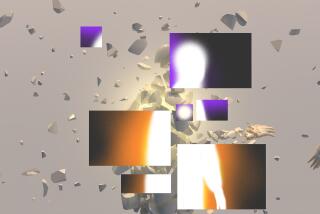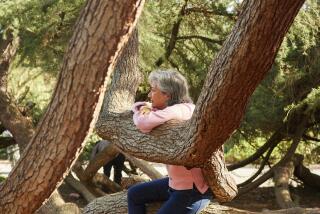Tricky Body Rhythms : See the Light, Get Help for Winter Blues
He is a psychiatrist, one fairly well-known in his field, yet he has suffered severe, debilitating depressions every winter for the last 35 years, with virtually no relief.
The man even rearranged his medical career to compensate for this embarrassment. In the 1950s, he enrolled in summer quarters at his Ohio medical school--so he could skip winter quarters. Then he took an internship in Honolulu (which helped some) and turned down a residency at Harvard University in favor of one at UCLA.
“Long before I was a physician or a psychiatrist I just knew that in the winter I felt terrible,” he said recently, requesting anonymity. “I wanted to hibernate, to sleep late. My energy was always extremely low. In school, I always dreaded the last football game because that was the beginning of winter. Between the last football game and spring, I could almost count on being out of it and I never knew why.”
Treatment Fails
Traditional treatment for depression (counseling, anti-depressant drugs) did next to nothing for the man’s seasonal difficulties, even after he settled in Los Angeles and began a successful private practice.
But a few weeks ago, he tried a new and unusual therapy for what is now officially recognized as “seasonal affective disorder” or winter depression.
On the advice of UCLA psychiatry professor Dr. Robert H. Gerner, he paid $400 for three panels containing a dozen, four-foot-long fluorescent, “full spectrum” lights--lights designed to simulate sunlight.
Each morning at 5 o’clock and each evening at dusk, the man spent an hour or more in front of the lights, “sunning” his psyche. He did not tan (ultra-violet light was blocked by a plastic screen). Indeed, it wasn’t even required that he disrobe. All he had to do was glance frequently in the direction of the bright lights.
‘Felt Like Spring’
“After three or four days of this, I felt like it was spring again. The depression was gone,” he said after two weeks of light sessions, which, according to one theory, trick the body’s circadian rhythms into thinking the days are longer. Just as they are in spring and summer.
At more than a dozen centers throughout the country and others around the world, hundreds of depressed individuals--some to the point of requiring hospitalization--are now undergoing daily exposures to intense, bright light.
Though initially ridiculed, light therapy, which is about five years old, is now commanding considerable respect in the medical research community. Many major psychiatric conferences have begun devoting a half or full day to papers on the subject. And questions about light treatment will be included on upcoming national continuing education examinations for psychiatrists.
“I’ve been really surprised at the rapidity with which we’ve moved from the lunatic fringe to the mainstream,” said Dr. Norman Rosenthal, one of the pioneers in the field and director of the National Institute of Mental Health’s “seasonality program.”
“It’s becoming more and more accepted. If a person is carefully diagnosed as having winter depression and undergoes appropriate treatment with bright light, the positive response rate is greater than 80%,” added Dr. Alfred Lewy, another pioneer who directs the Sleep and Mood Disorders Laboratory at Oregon Health Sciences University in Portland. “The controversy now is over issues about how the lights work and what’s the best time to use them. But generally, there’s agreement that they do work for the winter depressive patients. I don’t know anybody who is writing papers challenging that.”
UCLA clinical psychiatry professor Ronald Podell, who asked UCLA’s Gerner to help establish a program of light therapy at the private Center for Mood Disorders in Los Angeles, calls the treatment “a breakthrough.” It can produce fast results without the use of drugs or psychotherapy, he said, and can provide enormous benefits for people sometimes “so depressed they can kill themselves.”
At the Center for Mood Disorders, light therapy was first offered early this year. Regular psychiatric patients considered suitable for the treatment were given the opportunity to purchase or lease (at $20 a week) light panels, with instructions on how to use them.
Thus far, said Center co-director Dr. Michael Gitlin, one patient has experienced a complete success (the aforementioned psychiatrist) and one patient experienced a distinct failure (though directed to use the lights morning and evening, he was only willing to use them at night and became extremely irritated by them). Several other patients’ results have not yet been evaluated.
Though the Center’s findings are far from conclusive, Gitlin, Podell, Gerner and others remain excited about using light to treat winter depression and possibly other mood disorders. They point out that the research behind the treatments is already offering new insights on how the brain functions and perhaps answers for patients suffering from different types of depression. In addition, they expect that sleep disorders, jet lag, and other maladies that may be tied to circadian rhythms can also be treated effectively with light.
‘Why’ Still Elusive
But despite increasing amounts of research by psychiatrists, ophthalmologists, photobiologists, pharmacologists, engineers, biochemists and others, there is still not a great deal of agreement among researchers on precisely why intense bright light produces anti-depressive effects.
Some investigators initially speculated that exposure to bright light contributes to the suppression of the hormone melatonin. They reasoned that this suppression of melatonin (triggered by a perception of light through the eyes and resulting signals sent from the retina to the pineal gland) is a significant seasonal time cue for many mammals.
In some humans, the result of reduced light is believed to be a de-synchronization of the body’s biological clock. As Podell of the Center for Mood Disorders explained, “In the winter, when our bodies are exposed to less light, some peoples’ bodies may spend more time secreting melatonin, which may potentially cause them to feel sleepy, apathetic, withdrawn, given to carbohydrate cravings and depressed.”
Though using lights to lengthen the day in both the morning and the evening has worked for many winter depressive patients, many researchers have since revised their view of melatonin. They now see it as a marker, useful in dividing winter depressives into two groups: those who respond best to morning light and those who respond best to evening light. They have found that such exposures have the effect of either shifting circadian rhythms earlier or delaying them, whichever is diagnosed as appropriate.
But some researchers such as light therapy pioneer Dr. Daniel Kripke of the Veterans Administration Medical Center in La Jolla claim that conclusive studies with actual measurements of melatonin will be needed before it can be understood why light therapy is effective.
In the meantime, Kripke has demonstrated that light treatments can be useful on patients suffering from non-seasonal depressions. And that “full-spectrum” light is not critical.
On patients with manic depressions and what are known simply as “major depressions,” Kripke has used ordinary fluorescent light--with what is considered promising success given the severity of the disorders being treated.
He said he has achieved “small improvements on most patients,” and shown results that are “probably better than a week of treatment with anti-depressant drugs in the same time.”
As for his choice of standard lighting, Kripke indicated he has found “no evidence whatsoever that so-called ‘full-spectrum’ light is any better than other fluorescent bulbs. There have been no carefully controlled comparisons.” (Such a study is currently under way at Lewy’s Portland laboratory.)
While light therapy may be safer for many patients than anti-depressant drugs, it is not without side effects.
Kripke points out that in three of about 60 non-seasonal depression cases he has treated with light, depression was alleviated but mania (the manic phase of manic-depression) was induced. In two of the three cases, the patients receiving light treatment had to be restrained.
Those studying winter depression have also reported occasional cases of light treatments triggering mania, a side effect which is also sometimes created by anti-depressant drugs.
The researchers further caution that if not properly timed, light treatments can make circadian rhythm disturbances worse instead of better. And they emphasize that the treatments are still new, tricky (even for the pros) and potentially harmful.
“Most powerful medical treatments have potential for good and for harm,” warned Kripke. “Available data suggests the benefits (of light treatment) outweigh the risks; however, because of the risks the treatment should probably be used under medical supervision.”
But might not most people benefit from increased light in their lives?
“I don’t think any responsible physician would give a prescription in an article,” replied Rosenthal of the National Institute of Mental Health, cautioning that a depressed individual might purchase some lights, not use them correctly and “become plummeted” in even deeper depression.
“I would not recommend that people who are depressed go and treat themselves,” he said, “but it’s innocuous enough for people under the weather to try and get a little more light.”
Another alternative for those suffering from depression--at least the seasonal variety--might be to move South . . . far South.
UCLA’s Gerner pointed out that distance from the Equator may be a strong factor in the prevalence of seasonal affective disorder. He cited a study conducted in Tromso, Norway, that estimated that 20% of the city’s population suffered from winter depression.
“But,” he added, “no one has been able to document winter depression occuring anywhere near the Equator.”


